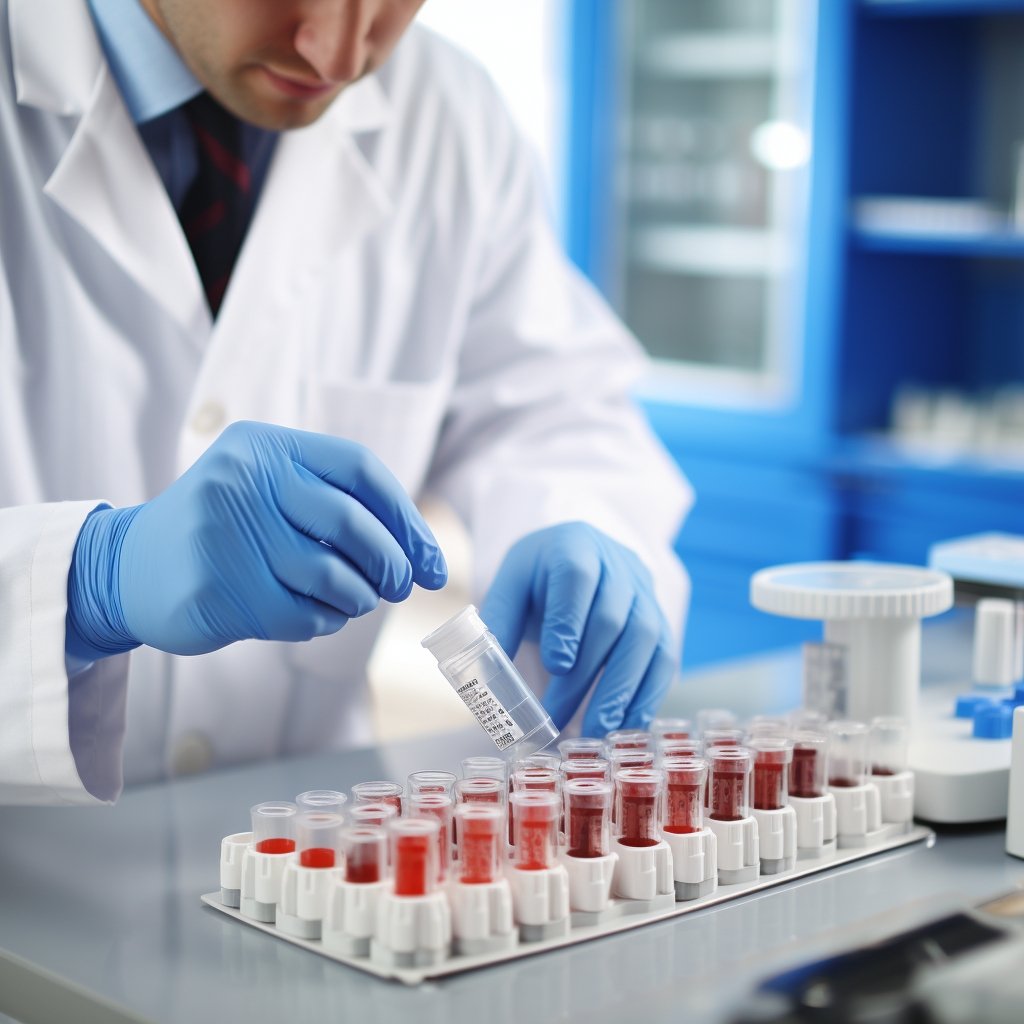*Disclaimer: This blog post is based on extensive research, but it is for informational purposes only. It does not replace professional medical advice, diagnosis, or treatment. Always consult with a healthcare provider before making changes to your diet or supplement regimen.*
If you're a health conscious seafood lover and like me who's ever wondered about the relationship between seafood, mercury, and health, you're in the right place. Today, we'll delve deep into this topic, exploring mercury detoxification, how to make smart seafood choices, and the integral role of certain nutrients in protecting our bodies. So, let's dive in!
Understanding Mercury in Our Oceans
Mercury, a metallic element present in the environment, can originate from both natural sources, like volcanic eruptions and weathering of rocks, and anthropogenic, or human-caused sources, such as coal-fired power plants, certain chemical manufacturing processes, and waste incineration [[source]]. This element can be carried by air currents and deposited in water bodies, including oceans, where it transforms into methylmercury.

Methylmercury is a neurotoxic compound, capable of damaging the nervous system and impairing neurological functions [[source]]. Sea creatures absorb it, and it tends to bioaccumulate, meaning it builds up over time in organisms. This bioaccumulation is particularly pronounced in larger, longer-living marine species such as sharks, whales, and certain types of tuna [source].
Balancing Seafood Consumption and Health
Seafood, a rich source of lean protein, omega-3 fatty acids, and a variety of essential micronutrients, forms an integral part of a balanced diet [source]. However, the presence of mercury necessitates careful selection and consumption of seafood to maintain health and wellbeing.

The US Environmental Protection Agency (EPA) and Food and Drug Administration (FDA) have jointly released guidelines to recommend safe mercury intake levels, categorizing seafood based on mercury concentrations [source]. Lower-mercury seafood, including shrimp, scallops, salmon, and others, are suitable for more frequent consumption, while larger predatory fish, known to contain higher mercury levels, should be eaten sparingly, especially by sensitive groups like pregnant women, nursing mothers, and young children.
Mercury Toxicity: Insights from Dr. Mark Hyman
Dr. Mark Hyman, a leading figure in functional medicine, has extensively explored mercury toxicity, sharing valuable insights on his blog [source]. Advocating for a systematic, personalized approach to mercury detoxification, Dr. Hyman emphasizes professional medical supervision throughout the detoxification process. He outlines a three-phase plan for detoxification: Preparation for Detoxification, Introducing Additional Detoxification Support, and the Metal Detoxification Phase.

Preparation for Detoxification
This initial phase aims to enhance your nutritional status and augment your body's inherent detoxification capabilities before embarking on active detoxification. It entails steps to optimize gut function, such as eliminating common allergens and incorporating prebiotic and probiotic foods. It also involves supporting the liver’s detoxification pathways with specific nutrients, starting regular sauna sessions to promote sweating, and optimizing elimination routes for metals.
Introducing Additional Detoxification Support
Dr. Hyman then suggests bolstering liver detoxification pathways with certain nutrients and supplements. These include alginate, a compound from seaweed known for its ability to bind to metal ions in the gut, and other nutrients known for their detoxifying properties, like selenium, zinc, n-acetylcysteine, lipoic acid, milk thistle, and garlic [source].
The Metal Detoxification Phase
In the final phase, Dr. Hyman recommends evaluating the extent of mercury dental fillings in your teeth, which can contribute to your overall mercury burden. He also advises carrying out a provocation test under medical supervision to assess your total body load of mercury. Use of specific binding agents that can chelate, or grab onto, mercury in your system facilitates its elimination. Alongside this, he suggests daily sauna sessions for enhanced detoxification, ensuring adequate hydration, and considering a boost to detoxification with intravenous administration of vitamins and antioxidants, under professional guidance.
Decoding Mercury Detoxification
Detoxification, a natural process that your body continually carries out, can be supported and enhanced through specific lifestyle modifications. Here's how you can work towards optimizing your body's detoxification potential:
1. Hydration: Water plays a crucial role in flushing out toxins and aiding various physiological processes. Ensure you stay well-hydrated throughout the day.
2. Diet: Incorporate detoxifying foods rich in antioxidants and essential minerals, such as leafy greens, cruciferous vegetables, berries, and seeds.
3. Regular Exercise: Engaging in regular physical activity enhances circulation and aids your body's natural detoxification processes.
4. Sweating: Sweating, which can be induced through physical activity or using a sauna, helps eliminate toxins, including heavy metals, from your body.
5. Supplementation:Here are some studies and reviews that discuss the use of certain supplements in heavy metal detoxification:
- Selenium: A study published in the journal Marine Environmental Research showed that selenium could counteract mercury toxicity. The interaction between selenium and mercury can form a biologically inactive complex, reducing mercury's harmful effects (Ralston NV, Raymond LJ. Dietary selenium's protective effects against methylmercury toxicity. Toxicology. 2010).
- Activated Charcoal: Activated charcoal is often used in medicine to treat drug overdose or poisoning due to its ability to bind to toxins. It may also help in case of heavy metal poisoning (Pond, S. M., & Olson, K. R. (1984). Methods for enhancing the elimination of toxic substances. Annals of Emergency Medicine).
- Chlorella: A 2011 study published in the journal "Nutrition Research and Practice" found that chlorella intake could decrease the accumulation of heavy metals in the body, supporting its use in detoxification (Shim, J.-Y., Shin, H.-S., & Han, J.-G. (2009). Chlorella vulgaris has preventive effect on cadmium induced liver damage in rats).
- Milk Thistle: Silymarin, an active compound in milk thistle, has shown to help protect the liver against toxicity from heavy metals and environmental toxins (Kaur V, Kumar M, Kumar A, Kaur K, Dhillon VS, Kaur S. Therapeutic potential of silymarin: an overview. Pharm Biol. 2016).
- Probiotics: Some studies suggest that certain strains of probiotics may bind heavy metals, reducing their absorption in the human body (Zhai Q, Narbad A, Chen W. Dietary strategies for the treatment of cadmium and lead toxicity. Nutrients. 2015).
- Alpha Lipoic Acid: Some evidence suggests that alpha-lipoic acid can help remove heavy metals from the body and mitigate their harmful effects (Gurer H, Ozgunes H, Neal R, Spitz DR, Ercal N. Antioxidant effects of alpha-lipoic acid in lead poisoning. Free Radic Biol Med. 1999).
- Dandelion Root, Burdock Root, Coriander, Turmeric and Black Pepper Combination: While these herbs and spices have antioxidant and anti-inflammatory properties, their specific efficacy in heavy metal detoxification needs more research. For example, some research suggests that curcumin, a compound found in turmeric, might mitigate the effects of heavy metal exposure (García-Niño WR, Pedraza-Chaverrí J. Protective effect of curcumin against heavy metals-induced liver damage. Food Chem Toxicol. 2014).
Please remember that supplement use should always be guided by a healthcare professional, and that no supplement regimen can replace the need for avoiding exposure to heavy metals in the first place.
6. Prioritize Sleep: Adequate, quality sleep enables your body to perform essential restorative functions, including detoxification.
7. Stress Management: Chronic stress can inhibit your body's detoxification pathways. Incorporating stress management practices like yoga, meditation, and breathwork can support overall wellbeing [[source]]
8. Limit Toxin Exposure: Reducing exposure to other environmental toxins helps lessen the burden on your detoxification systems.
The Protective Role of Selenium and Omega-3s
Seafood consumption not only introduces mercury into your system but also beneficial nutrients like selenium and omega-3 fatty acids. Selenium has been shown to bind to mercury, reducing its toxic effects and assisting in its elimination from the body. Additionally, omega-3 fatty acids, highly concentrated in seafood, confer numerous health benefits including supporting heart health, promoting brain function, and reducing inflammation. These health benefits may outweigh the potential risks associated with mercury exposure in seafood.
Omega-3 Index Levels and Your Health
Omega-3 fatty acids, specifically EPA (eicosapentaenoic acid) and DHA (docosahexaenoic acid), are crucial for optimal health. They're fundamental for brain development, heart health, and inflammation regulation. However, about 99 percent of Americans are deficient in these essential fats. Dr. Hyman suggests taking an Omega-3 Index Test, a measure of the amount of EPA and DHA in the blood, to evaluate your fatty acid status. He offers specific interventions to address deficiencies, including consuming more omega-3 rich foods like fatty fish and considering omega-3 supplements.

Navigating Seafood Consumption with Seatopia
At Seatopia, we strive to make the health benefits of seafood accessible to everyone. To ensure our customers make informed choices, we provide seafood with quantifiable nutrition facts and verified heavy metal levels. Each of our products comes with a Certificate of Analysis, outlining the quantified content of heavy metals. We're committed to supplying high-quality, low-mercury seafood and supporting your journey towards optimal health. However, we also underline the importance of consulting with your healthcare provider before embarking on any dietary or supplement changes.
For additional, trustworthy information on mercury in seafood and its potential health impacts, we recommend these resources from the FDA and EPA. You can also connect with healthcare providers via the Ulta Wellness Center for personalized guidance: https://www.ultrawellnesscenter.com/
Health is a lifelong journey. Each step taken towards understanding your food choices, recognizing potential sources of toxins, and learning how to support your body's natural detoxification processes is an investment in your wellbeing. As your trusted partner in this journey, we're here to provide the information and resources you need to make empowered decisions for your health. Let's embark on this journey to better health together.
References:
(i) Wakefield AJ, et al. Eur J Gastroenterol Hepatol. 2005 Aug;17(8):827-36.
(ii) Uhlmann V, et al. Mol Pathol. 2002 Apr;55(2):84-90.
(iii) Kawashima H, et al. Dig Dis Sci. 2000 Apr;45(4):723-9.
(iv) Bradstreet JJ, et al. J. Am. Phys. Surgeons 9 no. 2 (2004) 38-45.
(v) Taylor B, et al. Lancet. 1999 Jun 12;353(9169):2026-9.
(vi) Holmes AS, et al. Int J Toxicol. 2003 Jul-Aug;22(4):277-85.
(vii) Bernard S. Medical Hypothesis. 2001:56 (4): 462-471.
(viii) Hviid A. JAMA. 2003; 290: 1763-1766.
(ix) Rimland B, Bernard S. JAMA. 2004; 291:180-181.
(x) Bradstreet J. Journal of American Physicians and Surgeons. Volume 8 Number 3 Summer 2003.
(xi) Frustaci A, et al. J Am Coll Cardiol. 1999 May;33(6):1578-83.











Share:
Unveiling the Future of Seafood: The Miraculous Benefits of Superfrozen Seafood with Seatopia
Celebrating Shark Week: Unveiling the True Nature of Sharks and the Efforts of Seatopia